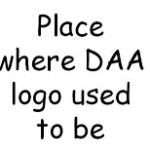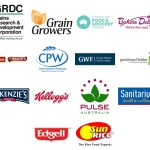Nicola Roxon thinks were too fat, smoke too much and drink too much. And all of this overindulgence is costing the country a motza. But don’t worry she’s got a solution. She’s going to nag us to death instead. This week she announced she’s creating the National Preventative Health Agency (NPHA).
This brand spanking new, taxpayer funded thingo will ”push, cajole and lead” families, schools, workplaces, industries, clubs and community organisations to encourage healthier living.
You don’t have to exercise too much imagination to understand what that’s going to look like. Get ready to be told you need to exercise more, eat less fat, stop smoking and stop drinking. Nicola’s health taskforce has observed that the stuff we’ve been told to do for 30 years isn’t working, and their solution is, ah, to do more of it?
Its timely then, that just last week, the Royal Children’s Hospital in Melbourne published the results of a study into exactly how effective that kind of nagging is. The research team asked 66 general practitioners to administer advice “targeting change in nutrition, physical activity, and sedentary behaviour.” The advice was in accordance with the national healthy living guidelines, exactly the same guidelines that Nicola plans to ‘cajole’ us with.
In the study, 258 obese Melbourne children were randomly assigned to either an intervention or a control group. The children in the intervention group saw their GP four times over a 12 week period and received all the recommended advice about nutrition and exercise. The kids in the control group lived life as normal without any nagging from their doctor.
Twelve months later, the researchers checked in with the kids to see what difference it made. The result was that the counselling “did not improve BMI, physical activity, or nutrition in overweight or mildly obese 5-10 year olds.” The researchers went on to note that “and it would be very costly if universally implemented.”
Details are a bit light on at the moment, but I don’t think Nicola is planning to have our doctors nag us once a month. Even if she did, this study suggests the outcome would be exactly the same as doing nothing. And doing nothing sounds like it might be quite a bit cheaper.
Our standard health advice might be firing blanks but elsewhere in the world, similar studies with slightly different advice have achieved significantly more impressive outcomes. In the UK, 644 schoolchildren were divided into two groups. One group was told they would be healthier if they stopped drinking sugar (in the form of soft drinks) and the control group was not told that. The message was delivered in four one hour lessons (one per term) during a school year.
The group of kids who weren’t told about sugar got fatter. By the end of the school year, there were 7.5 percent more overweight and obese kids in that group than there were at the start. But in the other group there were slightly less (.2 percent) fat kids. No one was forcing the children to stop drinking sugar and they didn’t entirely stop. They just slightly reduced the amount they drank on average.
The UK study was done in 2001 and adds to the pile of over 80 studies which say that if we drink less sugar we lose weight. This kind of evidence seems to have escaped the mighty deductive powers of our health hierarchy. Because even in the face of unequivocal proof that the advice we give our children doesn’t work, we’re lining up for more of the same.
Nicola, the definition of insanity is doing the same thing over and over and expecting a different outcome. It doesn’t matter how often you nag us about exercising more and eating less fat or how many Quango’s you create to do it. The advice is wrong and it won’t get more right by saying it more often. It’s time to start paying attention to what the science really says rather than what Big Sugar would like us to believe it says.
Also published in Crikey



















Recent Comments